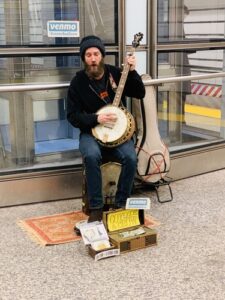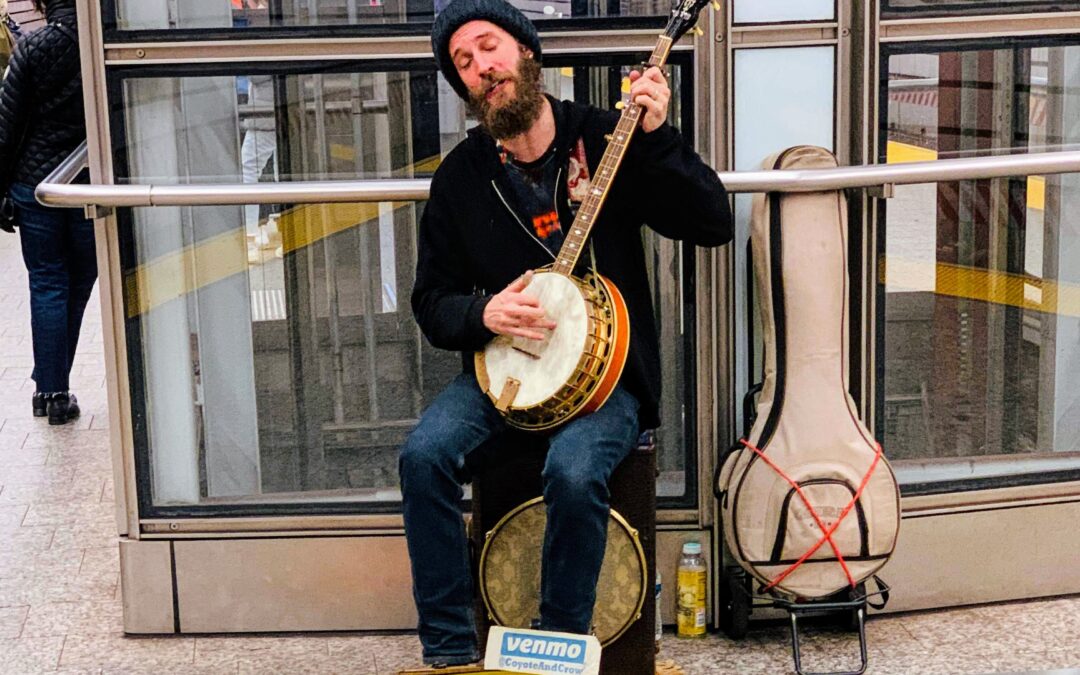This is the second in a series of Subway Diary entries: snapshots of life’s noteworthy experiences underground in NYC. The events described here took place in late January as I zig-zagged my way around Manhattan on crowded subways before COVID-19 restricted my ability to travel underground. Looking back, I’m grateful for my experience that day, and for what I learned as a result of that outing.
- I was all over the city on public transport today: Needed to get from home on the Upper West Side to a routine check-up at the Hospital for Special Surgery on 71st and the East River, so took the 79th Street crosstown bus to York and 79th and walked down. Got a clean bill of health from Dr. Todd Albert, who fixed my back and liberated me from chronic pain three years ago.
- Then needed to get to a law firm (Skadden) located in Times Square to moderate a panel on human trafficking, part of a program hosted by Sanctuary for Families for scores of prosecutors from around NY.
- Was too cheap to take a cab or uber so I walked the mile to 72nd and Lexington Avenue to catch the Q train for $1.35 with my senior citizen discount MetroCard. Originally referred to as the 2nd Avenue Subway, what’s now named the “Q” line had been talked about for almost a century and took a decade to build–ripping up 2nd Avenue, devastating countless businesses, and disrupting the lives of many thousands in the process.
- Now that it’s done, the new subway line is sleek and has two distinguishing features:
- it’s buried deep underground, seemingly in the center of the earth far below Manhattan. It takes two long, steep elevators and then a flight of stairs to get down there.
- It’s an amazing route: from 96th street & 2nd avenue on the Upper East side of Manhattan, gradually running diagonally across the city and then down the West Side–thru Times Square–before turning back east, thru Union Square, Chinatown, and on to Brooklyn.
- So, getting to the Q station at 63d and Lexington Avenue, I rode the escalators down to the clean, modern platform in the bowels of Manhattan–and there, from somewhere a ways down the platform I heard music: a man playing a fast-paced, driving version of the House of the Rising Sun on the banjo, singing in a low, raspy voice. A far cry from The Animals’ slow, haunting 1964 version.
- Curious, I walked in the direction of the music until I rounded the glass elevator shaft and saw a brown-bearded man with a long face seated with his back to the shaft in a chair resting on a small oriental rug. He wore jeans, a black sweatshirt, and a ski cap. I joined the group of about a dozen people watching and listening.

Talented Banjo Player Thomas Kopie
- Although I rarely use cash these days I always try to carry two bills — a $20 bill for emergencies and a $1 bill in case I hear a good musician.
- I reached into my wallet, only to find that I didn’t have a single dollar bill, which I’d given to a singer on the C train the day before. All I had was my $20 bill.
- So I just listened and, increasingly impressed and fascinated by this unusual character, I snapped his picture (above) on my iphone
- After he finished playing the House of the Rising Sun, and before starting the next song, the banjo player spoke to our small group assembled on the platform. In a quiet, firm voice, he said: “ This is how I earn a living. If you make a contribution, feel free to take a picture.”
- No one else had taken a picture. Without looking at me or yelling, he was addressing, dressing down, me. I felt guilty. Embarrassed. I debated whether to giving him my only $20—or whether to buy one or two cd’s for $20 even though I don’t play cd’s these days
- I did neither. I just got on the Q train feeling guilty for a minute before turning my attention to the program I was about to moderate. The conference room at Skadden was jammed–just one of so many events that couldn’t happen today.
- As I wrote this post, I planned to make amends to the banjo player by concluding with this apology: “If you happen to see this post—please know that I apologize for not contributing, and for taking your picture. Please send me a note with your contact info so that I can make amends and buy a cd. You’re terrific.”
- But Providence intervened: I happened to show my photo of the banjo player to a friend as I recounted the episode– and my guilt at not having forked over the $20. Glancing at the picture, David remarked that the banjo player had a “Venmo” account–with signs posted both above his head on the elevator shaft and on his money box sitting on the floor in front of him. Showing my age, I asked “what’s Venmo?” David explained that, if I really wanted to, I could send the banjo player money through Venmo.
- Having previously focused only on the banjo player himself, I hadn’t noticed that also visible in the photo was a yellow sign in the money box with the title: “Coyote & Crow”— apparently the name of a band.
- I googled Coyote & Crow, and immediately discovered that the banjo player has a name–Thomas Kopie–and a partner, his wife, Jaime, who plays the double banjo bass and the “suitcase snare,” and sings backups.
- I also saw that the two of them have a website coyoteandcrow.com and have released 6 albums.
- Finally, I could tell from looking at the various images on their website that playing in the subways–including at one or more Q stops–is not uncommon for Coyote & Crow–and that I’m not their only fan. Their website includes a viral video of fans dancing to their music on a subway platform .
- Armed with my newfound knowledge of Venmo and Coyote & Crow, I sent them $10 on Venmo and have bought one of their albums. I hope Thomas will accept my apologies for not doing so earlier.
- In any event, I urge you to check them out. In addition to the subways, they play in various clubs around the city.
- And as for me, the next time I’m equivocating whether to give a talented subway or street musician a $5, 10 or 20 when I don’t have singles, I’ll fork it over–or look for a Venmo sign.
- And now, I’ll go back to worrying about THE VIRUS.


Been there – street & subway performers deserve a monetary thank you & either I don’t have it or I’m moving too fast & later regret passing by.
Coincidentally, I opened a Venmo acct 3 days ago. In these extraordinary times, we don’t always have cash or a check. Zoom is cool, too. I had my first zoom webinar tonight. Intrapersonal or interpersonal, it’s a new world.
This is an ‘only in NYC story’. Thanks for sharing Rich. You can Venmo me $10 for this compliment. BE SAFE!
Truly a NYC moment….vividly and brilliantly described. Support musicians everyone! They make our world a better place. My son, Nick, has many musician friends. Most have second jobs and struggle. This Coronavirus “shelter in place,” while necessary, is devastating to them.